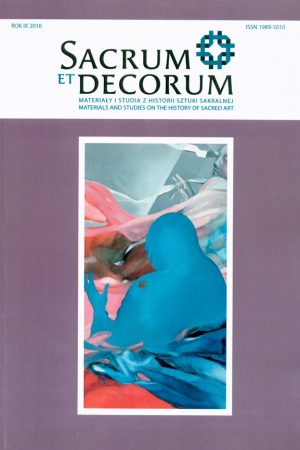Metafizyka – symbol – pejzaż. Przyczynek do badań nad obrazami Caspara Davida Friedricha z motywem ruiny
Słowa kluczowe:
Caspar David Friedrich; symbol; romantyzm; ruinaAbstrakt
Artykuł jest propozycją nowego odczytania znaczenia symbolicznego i metafizycznego trzech obrazów Caspara Davida Friedricha z motywem ruiny kościoła. W przypadku słynnego Opactwa w dąbrowie z 1809 roku pomocna okazała się konserwacja obrazu z lat 2013–2015. Rozważania stanowią polemikę z interpretacjami, które wychodzą od symboliki poszczególnych motywów. Podstawy symboliczności obrazów niemieckiego malarza upatruje autor bowiem w relacjach strukturalnych, które te motywy łączą, czyli w wizualnej postaci dzieł. Zatem symboliczność ta – zgodnie z coraz powszechniejszym po roku 1800 rozumieniem symboli – została ujęta jako ściśle związana ze zmysłową stroną przedmiotu symbolizującego. Z kolei właściwa symbolom zdolność odsyłania ku temu, co pozazysłowe, transcendentne i idealne, została wykazana jako zakorzeniona w relacji między światem przedstawionym na obrazach (zespołem motywów umieszczonych w pewnej przestrzeni) a płaszczyzną obrazową, rozumianą za egzystencjalno-hermeneutyczną nauką o sztuce jako wartość doświadczana w procesie percepcji obrazu, lecz nietożsama ze światem przedstawionym i transcendująca poza niego.Downloads
Pobrania
Opublikowane
Jak cytować
Numer
Dział
Licencja
Prawa autorskie (c) 2016 Sacrum et Decorum

Utwór dostępny jest na licencji Creative Commons Uznanie autorstwa – Użycie niekomercyjne – Bez utworów zależnych 4.0 Międzynarodowe.
Zgodnie z polityką Open Access autorzy zachowują pełnię praw autorskich do swoich artykułów – bez ograniczeń.
Autorzy mogą deponować swoje artykuły w wybranym przez siebie repozytorium.


